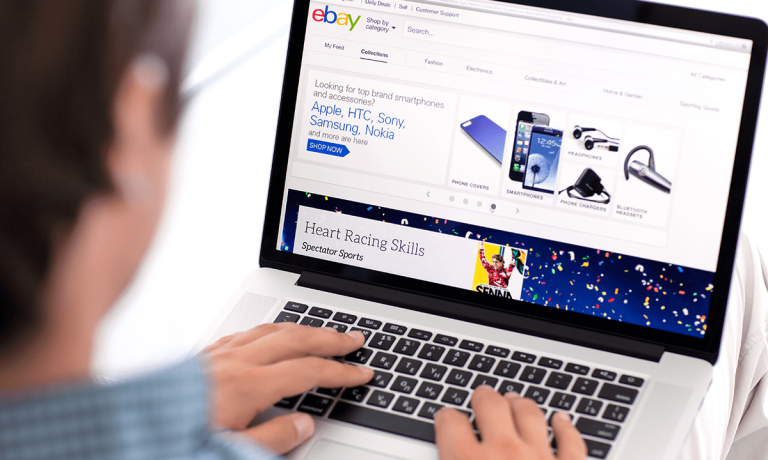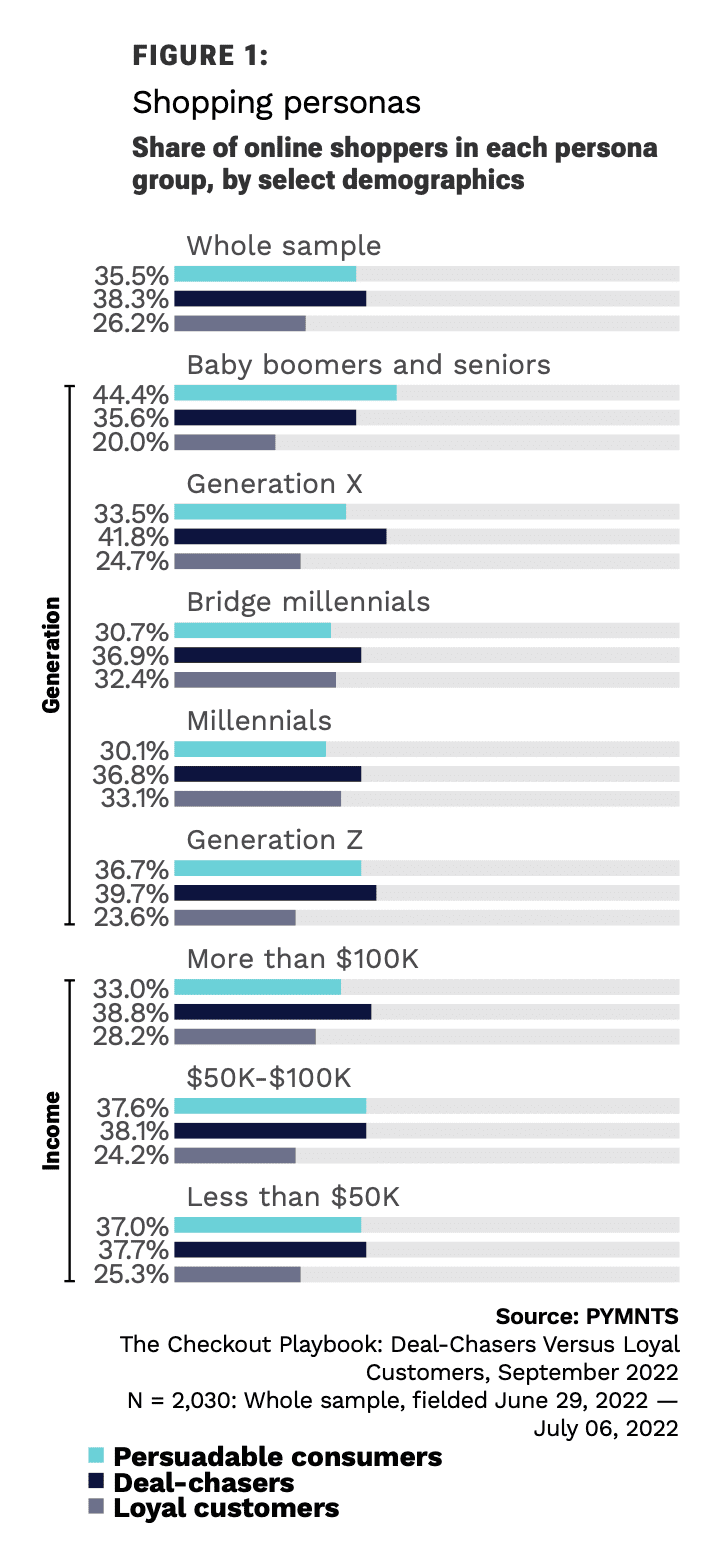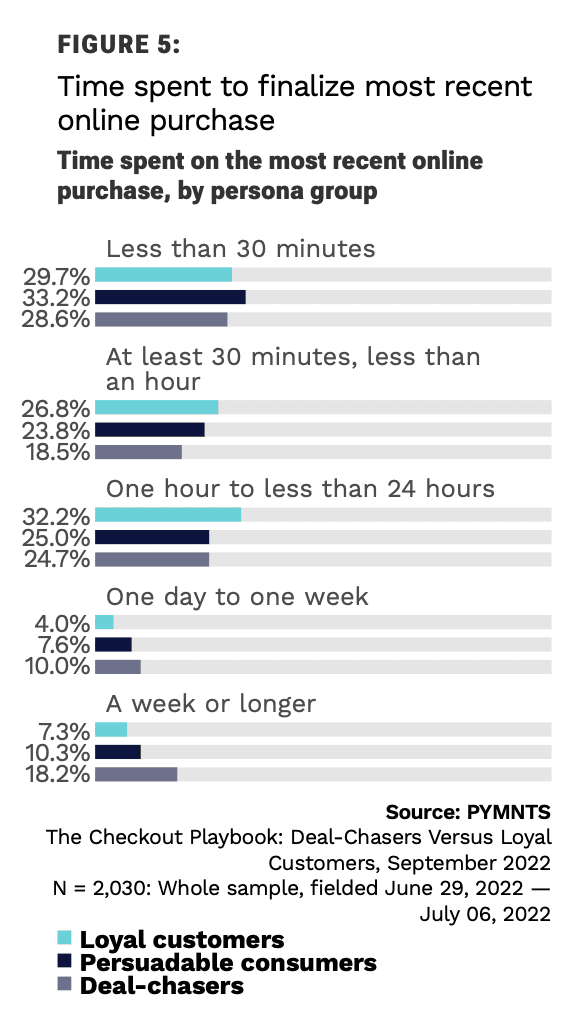
Inflation is top of mind for consumers. That’s no surprise.
And with higher prices comes the desire to find the most bang for the buck, the offers that help stretch shopping dollars. As PYMNTS research done in collaboration with Checkout.com reveals, across more than 2,000 consumers, a variety of online features, taken, together influence just how and where consumers click on the buy button — and how loyal they are to merchants in an environment where “hyper-competitive” is a bit of an understatement.
In the report, titled “At the Checkout: Deal-Chasers Versus Loyal Customers,” we found that online personas can be broken down to a few key segments. Among them: Deal chasers want the best prices. Persuadable customers are loyal to their preferred set of merchants — but they’re still searching for deals. Thus their fealty can be swayed. Loyal customers tend to stick with their tried-and-true merchants … but the door is not entirely closed on their seeking deals somewhere else.
All of this means that merchants must be as aware as possible of the online habits of their targeted consumers, and they also must always weigh their checkout experiences.
The data show that 38% of shoppers identified as deal chasers and 36% as persuadable consumers. Connectivity has something to do with it. Among consumers who own seven or more internet-connected devices, 40% are categorized as deal chasers, while 22% are loyal customers.
And no matter the income level, more consumers identify as deal chasers than anything else.

There’s at least some indication that platforms are a key consideration among the browsing and the buying. Of those consumers who identified as deal chasers, 44% made their most recent transactions via online platform.
Time is of the essence — meaning that various personas can make their decisions rather quickly. The chart below shows that roughly a third of loyal consumers and persuadable consumers spend less than an hour to make up their minds as to what to buy — and from whom.
